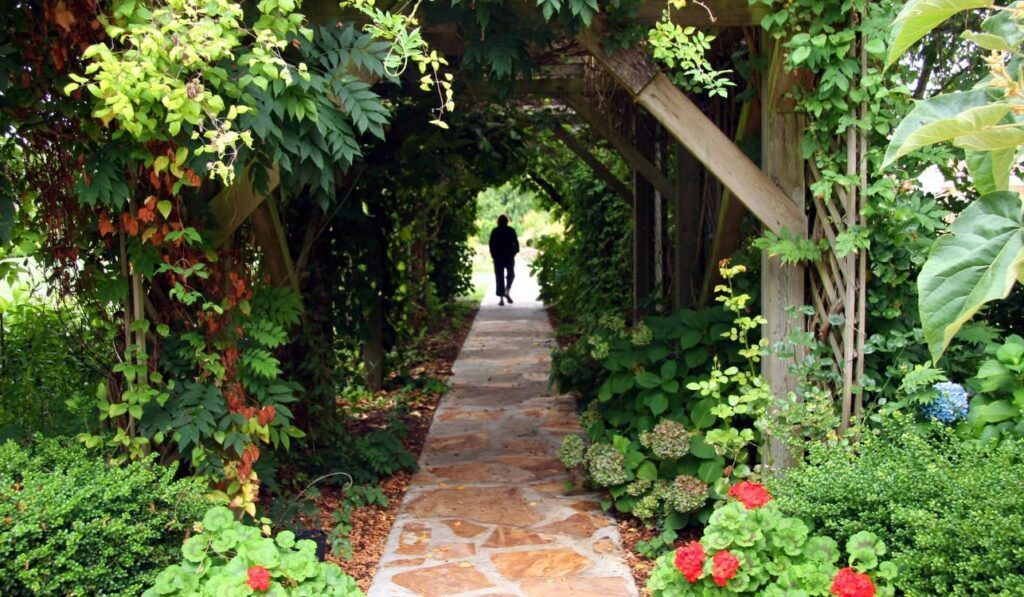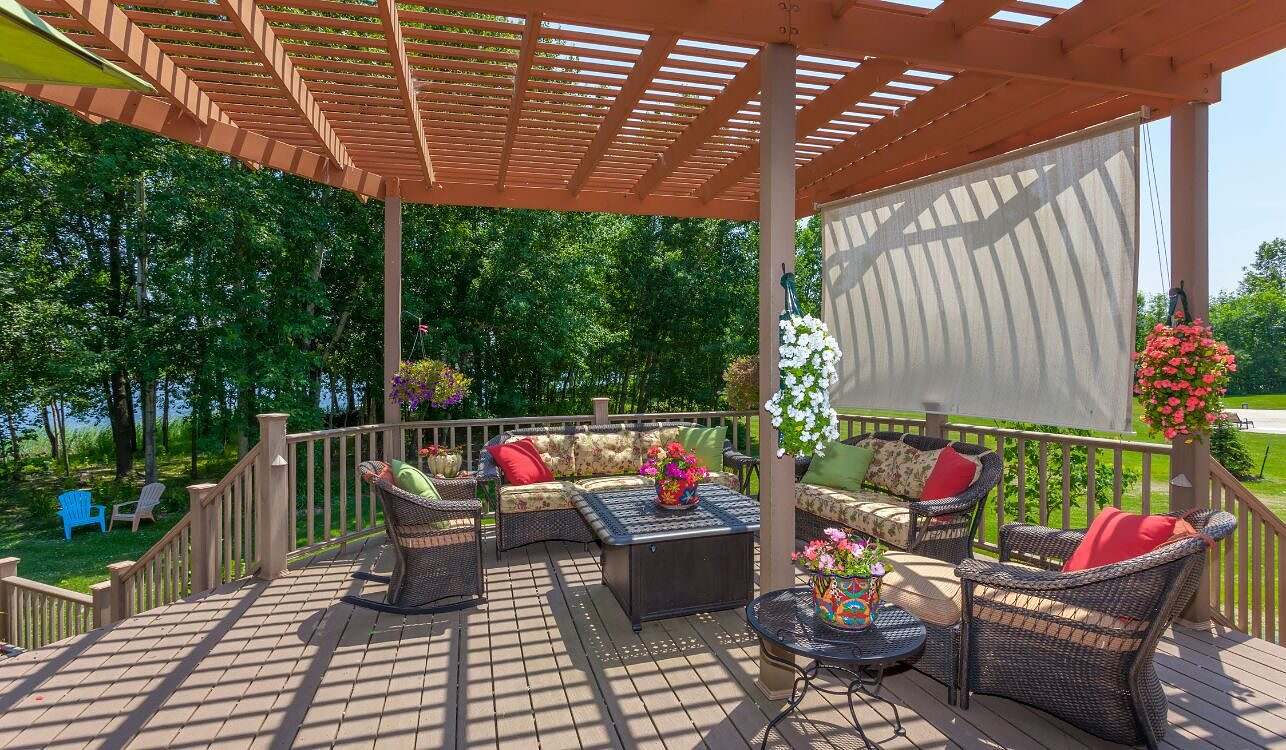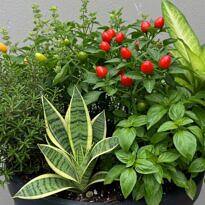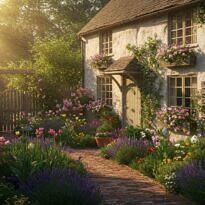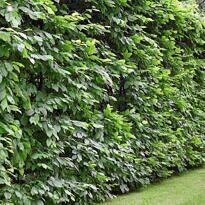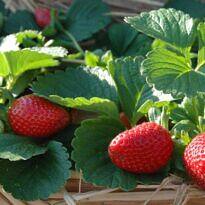Pergolas or Arbors?
End the confusion once and for all. Just imagine this scenario:
You’re in your garden, enjoying a gentle breeze on a sunny afternoon. You have a lovely spot to relax, dine outdoors, or simply appreciate nature. This is made possible thanks to incredible structures called pergolas and arbors.
In this complete guide, we’ll explore everything you need to know about pergolas and arbors, from their differences to how to choose the best one for your outdoor space. Get ready to transform your garden into an oasis of charm, tranquility, and nature appreciation!
Chapter 1: Pergolas – Elegance and Versatility
What is a Pergola?
Pergolas or pergolados are garden structures consisting of columns (or pillars) supporting horizontal beams, creating a sort of open roof. The roof can be covered with lattices or spaced beams, allowing sunlight to filter through gently. Additionally, you can grow climbing plants on the lattices to add a touch of green and create a natural atmosphere.
For a long time, I believed that pergolas, by definition, needed to be supported on a construction, such as houses or walls, and that this characterized them. However, I realized that they often did not follow this concept every time. It’s more accurate to understand that pergolas create living spaces in the garden, where you can add furniture, such as tables and armchairs, and enjoy the outdoor space.
What is the Purpose of a Pergola?
Pergolas are versatile structures that serve various roles in outdoor spaces. They are known for their ability to enhance the functionality and aesthetics of any exterior area. Let’s delve deeper into the purposes and benefits of a pergola:
1. Pleasant Shade and Sun Protection
One of the main uses of pergolas is to provide pleasant shade. With their lattices or spaced beams, they gently filter sunlight, creating a cool and pleasant environment. Beyond the latticed structure itself, we can make the shade even stronger with woven straw, piassava, linen, wicker, or other materials. This makes pergolas ideal for:
- Outdoor Seating Areas: Transform your pergola into an outdoor living space where you can relax, chat, and entertain guests, all without being directly exposed to the scorching sun.
- Outdoor Dining: Enjoy meals outdoors without the discomfort of excessive heat. A pergola provides the perfect balance between natural light and shade.
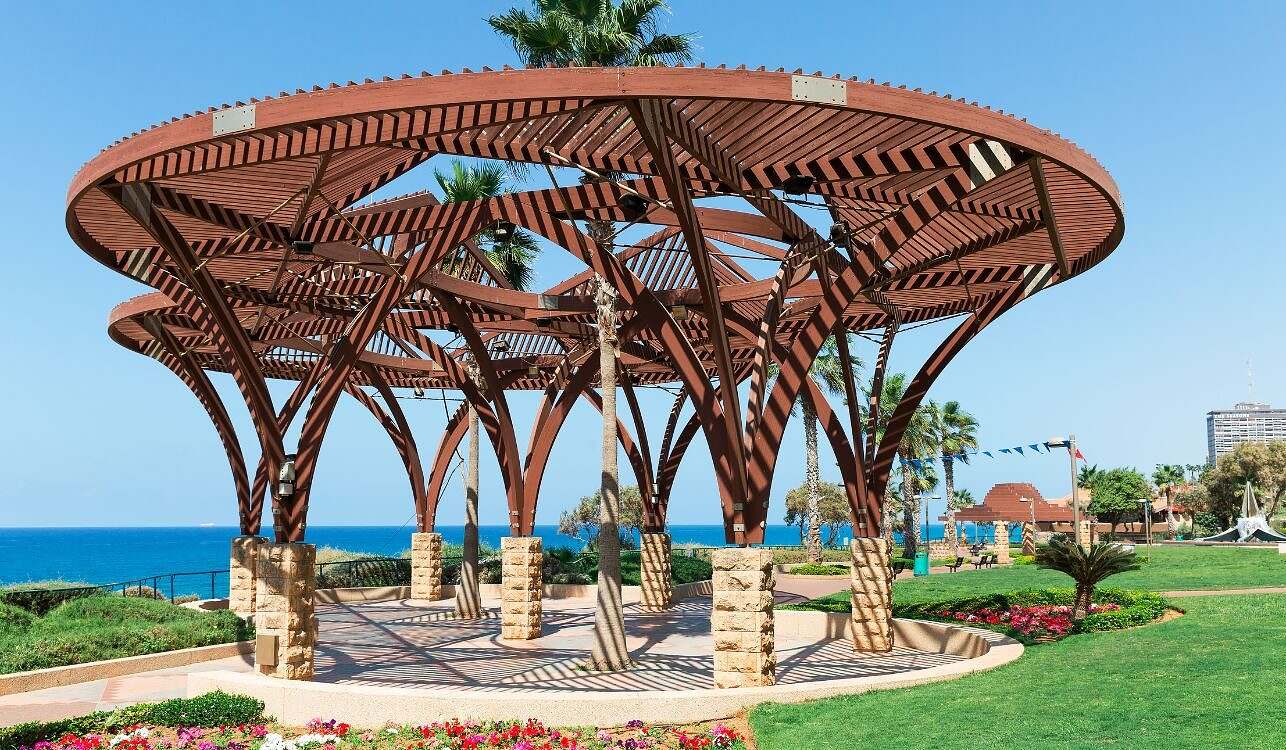
2. Plant Cultivation
A distinctive feature of pergolas is the ability to grow climbing plants on their lattices. This not only adds beauty and color to the structure but also offers additional benefits:
- Natural Aesthetics: Climbing plants like wisteria, ivy, and clematis create a lush, natural atmosphere, turning your pergola into a vertical garden.
- Privacy: As the plants grow, they can provide additional privacy, creating a visual barrier between you and your neighbors.
- Additional Shade: The leaves of climbing plants increase the shade, making your pergola even cooler and more pleasant.
- Desirable Microclimate: Furthermore, they provide semi-shaded spaces for plants that require such environments, like orchids, bromeliads, etc.
3. Decoration and Cozy Atmosphere
Pergolas are blank canvases waiting to be decorated according to your personal taste. Here are some ways to add style and a cozy atmosphere to your pergola:
- Lighting: Hang string lights or lanterns on the pergola beams to create a magical ambiance at night. Soft lights are perfect for romantic dinners or evening gatherings.
- Curtains and Fabrics: Add light curtains or fabrics to the sides of the pergola to create an intimate space protected from the wind. This also adds a sense of luxury to your outdoor environment.
- Furniture and Accessories: Choose comfortable furniture and accessories that reflect your personal style. From chairs and sofas to rugs and cushions, your pergola can become an elegant extension of your home.

4. Architectural Highlight
A well-positioned pergola can serve as an impressive focal point in your outdoor space. It adds an architectural touch that draws attention and creates a unique environment. Consider placing your pergola in strategic locations, such as:
- Garden Entrance: Use a pergola to mark the entrance to your garden, creating a sense of welcome and mystery.
- Central Patio: Placing a pergola in the center of your patio can create a sense of grandeur and provide shade over the living area.
- Front of the House: If you have a spacious front entrance, a pergola can make your home’s facade more inviting.
Regardless of how you choose to use your pergola, it will surely become an essential element in your outdoor space, providing shade, beauty, and a cozy environment to enjoy throughout the year.
Freestanding Pergola versus Attached Pergola
When it comes to adding a pergola to your outdoor space, one of the most important decisions you’ll face is choosing between a freestanding pergola and a pergola attached to your house. Each of these options has its own advantages and specific applications. In this guide, we will explore the differences between these two types of pergolas to help you make the right decision for your outdoor project.
Freestanding Pergola: Autonomous Beauty

A freestanding pergola, as the name suggests, is a standalone structure that is not connected to your house or any other existing structure. It stands alone in your garden or backyard, creating a distinct focal point. Here are some of the advantages and applications of a freestanding pergola:
Advantages:
- Focal Point: A freestanding pergola is perfect for creating an attractive focal point in your garden. It stands out and draws attention, adding beauty and charm to your outdoor space.
- Space Separation: Use a freestanding pergola to divide your outdoor space into distinct areas. This is particularly useful if you want to create separate zones for dining, relaxation, or entertainment.
- Location Flexibility: You can place a freestanding pergola anywhere in your garden, making the most of desired sunlight or shade.
- Accessibility for Climbing Plants: If you enjoy climbing plants, a freestanding pergola offers ample space for them to grow freely, creating a natural and attractive cover.
Applications:
- Dining Area: Install a table and chairs under the freestanding pergola to create a charming space for outdoor dining.
- Reading Space: Add comfortable armchairs and a bookshelf to transform your pergola into a peaceful retreat for reading and relaxation.
- Gathering Spot: Decorate with sofas and an outdoor fireplace to create a cozy space for entertaining friends and family.
Attached Pergola: Elegant Extension
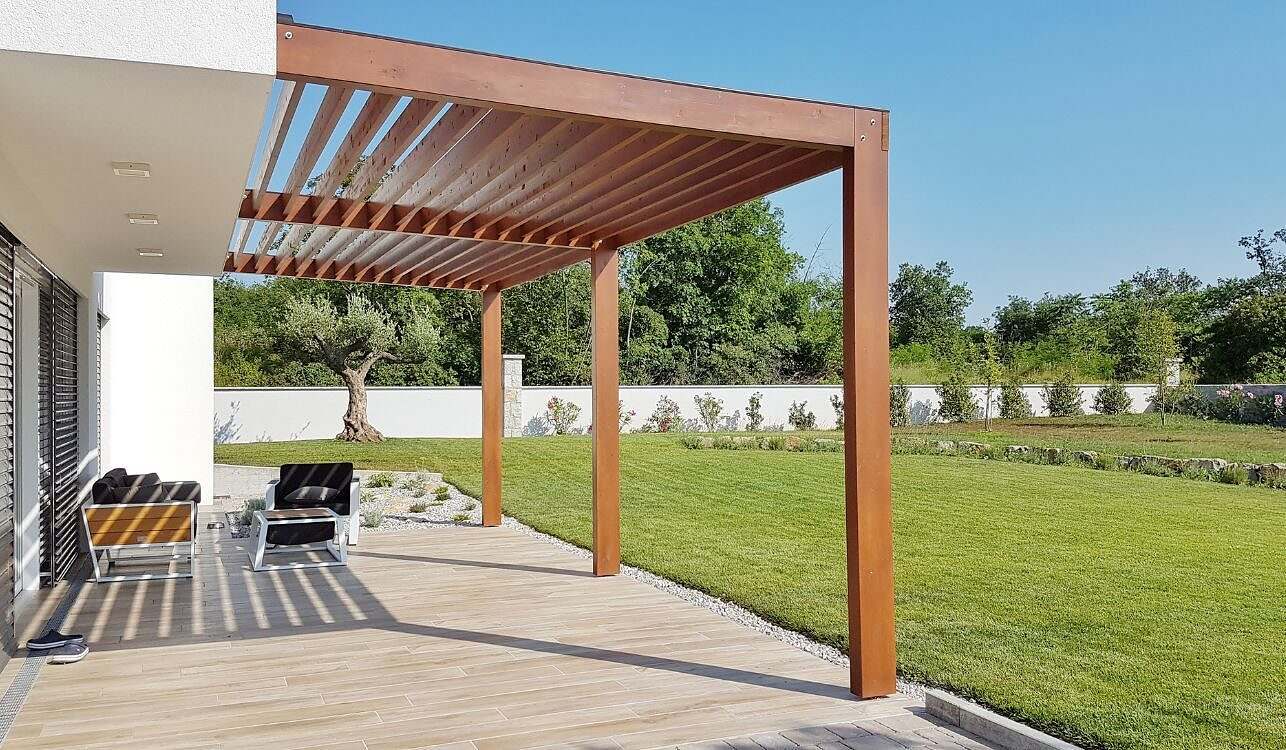
An attached pergola is fixed to your house or another existing structure, like a deck or patio. It extends from the wall, creating an elegant extension of your indoor space to the outdoors. Here are the advantages and applications of an attached pergola:
Advantages:
- Additional Protection: An attached pergola provides additional protection against weather elements, like rain or strong sun. This can make the outdoor space more usable throughout the year.
- Smooth Transition: An attached pergola creates a smooth transition between the indoor and outdoor spaces of your home. It makes your outdoor space feel like a natural extension of your house.
- Less Maintenance: As an attached pergola uses the wall of the house for support, it requires fewer columns and maintenance compared to a freestanding pergola.
Applications:
- Sitting Area: Transform the area under the attached pergola into a comfortable sitting space, complete with sofas and chairs. Add a coffee table for a perfect spot to chat with friends.
- Entertainment Space: If you enjoy entertaining, an attached pergola offers a sheltered spot for outdoor parties and dining.
- Barbecue Area: Place a grill or outdoor kitchen under the attached pergola to create a functional space for outdoor cooking.
How to Choose Between a Freestanding Pergola and an Attached Pergola
The choice between a freestanding pergola and an attached pergola depends on your needs, preferences, and the available space in your garden or backyard. Here are some important considerations:
- Personal Style: Consider the style that best fits your personal aesthetic. Freestanding pergolas have a more substantial look, while attached pergolas have a more integrated feel.
- Space Size: Consider the size of your outdoor space. Freestanding pergolas take up more space, while attached pergolas may be a better option for smaller spaces.
- Intended Use: Ask yourself how you intend to use the structure. If you want to create a complete outdoor sitting area, with furniture and dining space, an attached pergola offers more protection and functionality.
- Budget and Maintenance: Consider your budget and how much you are willing to spend on your outdoor structure. Freestanding pergolas are generally more affordable but may require more maintenance.
Both freestanding and attached pergolas have their place and purpose in the world of landscape design. The choice between the two depends on your personal preferences and the specific needs of your outdoor space. With the right choice, you can create a stunning outdoor environment that perfectly complements your lifestyle and offers years of beauty and functionality. So, what will your choice be: freestanding pergola or attached pergola? The decision is yours, and the outcome will be an amazing outdoor space to enjoy.
Chapter 2: Arbors – Framed Pathways
What is the Difference Between a Pergola and an Arbor?

You might have heard of arbors, but you may be wondering what the difference is between an arbor and a pergola. The answer is surprisingly simple: there is no significant difference. The terms “arbor” and “pergola” are often used interchangeably. Both structures consist of columns and beams that support an open or latticed roof.
I like to think that arbors are rarely attached to buildings, unlike pergolas. They tend to be standalone and function by creating portals within the garden, or simply framing a path. While pergolas end up creating an additional sitting environment, whether by extending the house or independently in the garden. Of course, we can have furniture under the arbor, but more as a bench for resting, or a hammock to contemplate the landscape.
Some argue that arbors are more shaded, while pergolas would be less shaded. Or that arbors are more robust and heavy structures suitable for large climbers, while pergolas are lighter and more elegant. But there are controversies on this subject, and many people argue the opposite.
Ah! And arbors can connect with pergolas and vice versa. What a delight to walk along a path framed by an arbor and suddenly find an expanded space, with chairs and a table for dining or admiring a collection of orchids.
In the end, what matters is your personal preference and the style you want for your outdoor space. You can call it a pergola or an arbor – the important thing is to create the environment you desire.
Arbor: A Gateway to Enchantment

Before we dive deep into the world of arbors, let’s start with the basics. An arbor is an elegant and functional garden structure that combines form and function in an extraordinary way. Arbors are architectural elements designed to create attractive and inviting outdoor spaces.
Arbors are composed of a support structure that can be made of various materials, such as wood, metal, or PVC. This structure is designed to resemble an arch or a tunnel, creating an enchanting passage or shaded space in your garden. They can be simple or elaborately decorated, depending on your style and preferences.

Why Choose an Arbor?
Now that we know what arbors are, you might be wondering why to choose this structure for your outdoor space. Well, there are many good reasons to consider adding an arbor to your garden or backyard:
1. Aesthetic Beauty
Arbors are simply stunning. They add a touch of elegance and charm to your outdoor space, transforming it into a visually captivating area. The often straight lines of arbors are softened with climbing plants that bring volume and colors, creating a charming contrast with the lush vegetation of your garden.
2. Shade and Refuge
One of the most obvious benefits of an arbor is the shade it provides. Imagine relaxing under the arbor on a hot summer day, enjoying a book or a peaceful conversation. Additionally, arbors can also serve as shelter from light rain, providing a cozy spot even on unstable days.
Many people also choose to use arbors as carports for their vehicles. In this case, be careful not to plant climbers with flowers that might stain the cars.
3. Landscape Highlight
Arbors are excellent for creating focal points in your garden. They can be strategically positioned to direct the gaze and highlight specific elements of the landscaping, such as a fountain, a sculpture, or even a beautiful tree. They add depth and visual interest to your outdoor space.
4. Support for Plants
A lovely feature of arbors is their ability to support climbing plants. Vines such as morning glory, jasmines, or Thunbergia mysorensis can be trained to grow over the structure, adding a burst of color and fragrance to your space. This also provides a cooler and more natural environment.
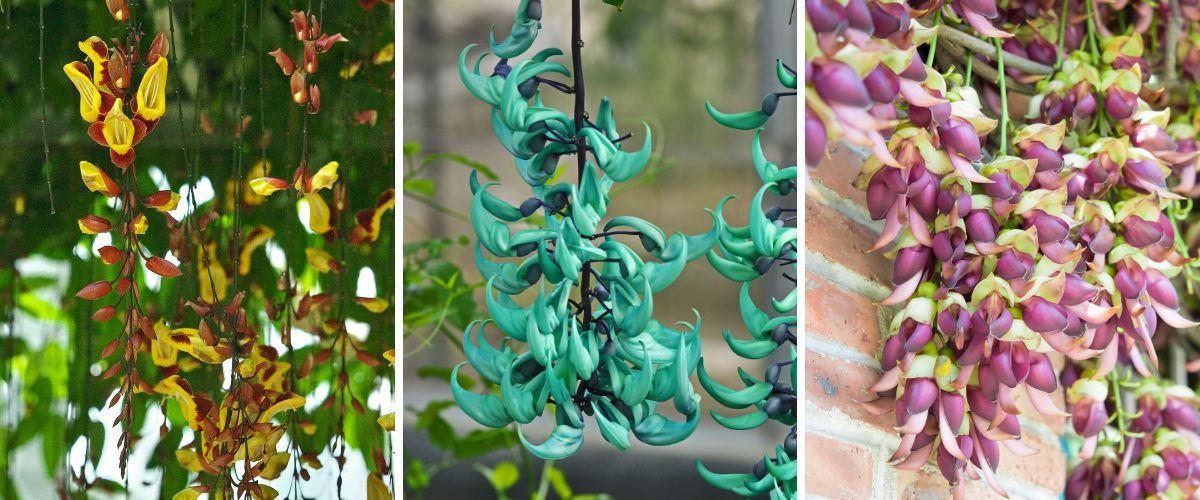
5. Versatile Structure
Arbors are incredibly versatile. They can be customized according to your style preferences, whether you’re a fan of a rustic wooden look or a modern metal design. Moreover, they easily adapt to different sizes of spaces, making them ideal for any garden or backyard.
Planning Your Dream Arbor
Now that you are convinced of the beauty and utility of an arbor, it’s time to start planning your own. Whether you are experienced or a beginner – creating an arbor is an exciting project that can be successfully accomplished with a bit of guidance. When in doubt, seek help from an architect or landscape designer.
1. Location Choice
The first step is choosing the ideal location for your arbor. Consider factors such as sun exposure, proximity to other structures, and how the arbor will fit into the existing landscape. Remember that arbors often serve as a visual highlight, so choose a location that will showcase them.
2. Design and Style
The design of your arbor is an exciting part of the process. You can opt for a traditional style with classic lines or a more contemporary design with creative touches. Think about how the arbor will integrate into your outdoor space and reflect your personal taste.
3. Climbing Plants
If you plan to grow climbing plants in your arbor, think about the varieties that most appeal to you. Some plants provide stunning flowers, while others emit enchanting aromas. Make sure to choose plants suitable for the climate and environment in which you live.
4. Construction and Maintenance

Building an arbor can be a rewarding DIY project for woodworking enthusiasts or something you leave in the hands of professionals. Make sure to follow best construction practices to ensure the durability and safety of your arbor.
Additionally, remember that regular maintenance, such as painting or treating the wood, may be necessary to keep your arbor in great condition. Always choose products suitable for rain exposure, like marine varnish or sealant.
Chapter 3: How to Choose Between Pergolas and Arbors
Now that you are familiar with the principles of pergolas and arbors, you might be wondering which is the best option for your outdoor space. Here are some important considerations to help you make an informed decision:
Personal Style
First, consider the style that best fits your aesthetic and the overall look of your outdoor space. Pergolas tend to have a more substantial appearance and are ideal for creating more spacious outdoor living areas. Arbors, on the other hand, work well as charming entrances or for framing garden paths.
Space Size
The amount of space available in your garden or patio is also an important factor. Pergolas usually take up more space due to their larger structure. If you have ample space and wish to create an outdoor entertainment environment, a pergola might be the better choice. For smaller spaces or sheltered, enchanting paths, an arbor might be more suitable.
Intended Use
Think about how you intend to use the structure. If you want to create an outdoor seating area, complete with furniture and dining space, perhaps even a gourmet area, a pergola offers more space and shade. On the other hand, if you simply want to create a charming focal point in your garden, mark an entrance, or shelter a path, an arbor may suffice.
Budget and Maintenance
Consider your budget and how much you are willing to spend on your outdoor structure. Pergolas, due to their size and needs, are generally more expensive than arbors. Also, think about the necessary maintenance. Wood requires more upkeep than materials like metal or PVC.
Chapter 4: Materials for Building Pergolas and Arbors
One of the most important factors when choosing your pergola or arbor is the material. Different materials not only affect the aesthetics of the structure but also its durability and maintenance. Let’s explore the most common material options for pergolas and arbors:
1. Wood:
There are many woods that can be used in the construction of pergolas and arbors, among these we can cite:
- Cedar: Cedar is a popular choice due to its natural beauty and resistance to insects and rot. Its reddish coloring ages gracefully.
- Pine: Pine is an affordable alternative to cedar. Although not as durable, it can be treated to withstand the elements.
- Teak: Teak is known for its water resistance and durability. It’s a more expensive choice but offers exceptional longevity, especially in coastal regions.
- Eucalyptus: Eucalyptus is a sustainable and affordable option. Its strength makes it suitable for outdoor pergolas.
- Itaúba: Itaúba is a Brazilian wood known for its strength and durability, making it a solid choice for pergolas.
- Angelim: Angelim is another robust tropical wood that is resistant to insects and adverse conditions.
- Garapeira: Garapeira is valued for its natural resistance to rot and moisture.
Pros: Wood offers a natural and warm aesthetic that integrates well in outdoor environments. It can be painted or stained for customization.
Cons: Wood requires regular maintenance, such as sealing and repainting, to avoid damage from weather exposure.

2. Metal:
-
- Aluminum: Aluminum is lightweight, corrosion-resistant, and does not rust. It’s a low-maintenance choice and is available in various colors and styles.
- Steel: Steel is durable and can be painted for a customized look. However, it may be susceptible to rust if not properly coated.
- Wrought Iron: Wrought iron is known for its elegance and artistic details. It’s a sophisticated choice but requires rigorous maintenance to prevent rust.
Pros: Metal materials are robust and typically require less maintenance than wood. They offer a modern or traditional aesthetic, depending on the chosen style.
Cons: Metals can heat up under the scorching sun, and in the case of steel and iron, may require anti-rust maintenance.
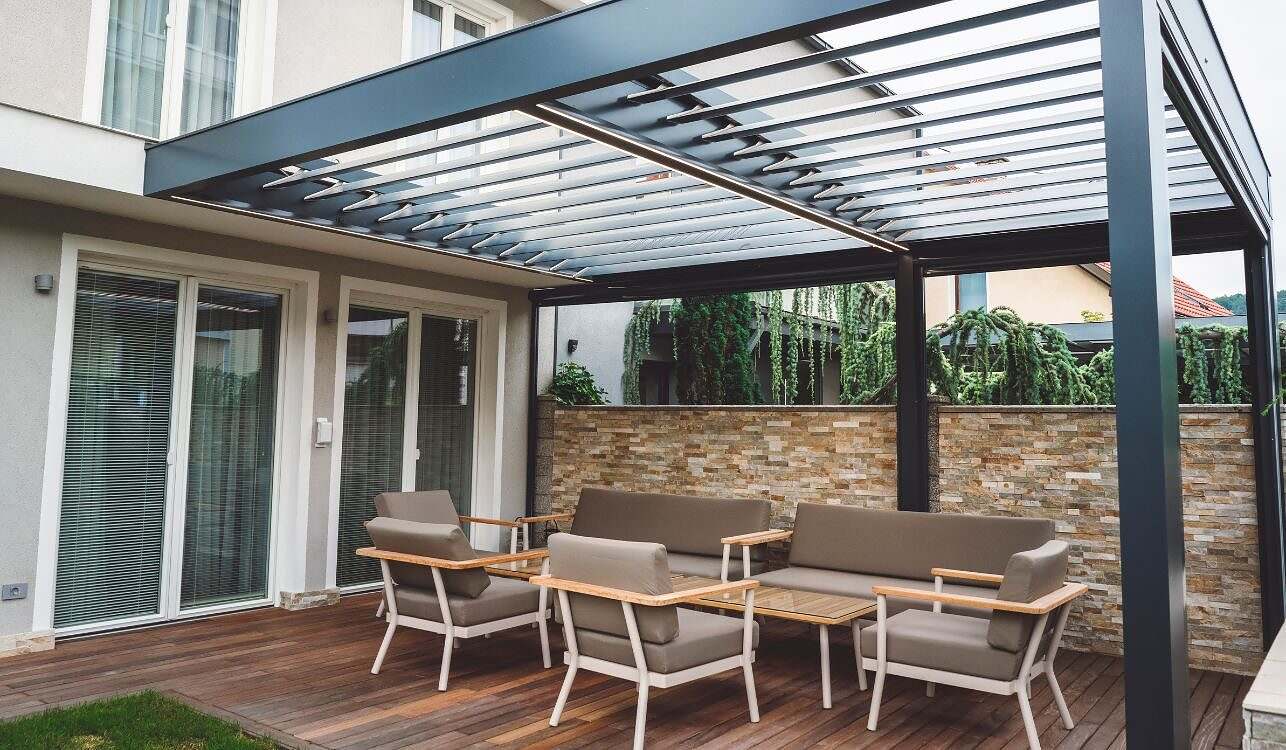
3. PVC:
Today, we have high-quality technological plastic materials for the manufacture of pergolas and arbors. Materials made of PVC, Recycled Plastic, and even blends with wood. When purchasing your PVC structure, choose from reputable companies that provide guarantees of durability and beauty over time.
- PVC (polyvinyl chloride) is a durable plastic material and corrosion-resistant. It is known for its low maintenance and resistance to fading.
Pros: PVC is a low-maintenance choice that maintains its appearance over time. It’s resistant to insects, rot, and doesn’t require repainting or sealing.
Cons: Some may find PVC less aesthetic compared to wood or metal, but it offers exceptional durability.
4. Masonry:
A masonry pergola or arbor is built to withstand the elements and the test of time. Masonry materials are highly durable and require little maintenance. They can be customized with a variety of brick, stone, or concrete patterns and colors to match your home and garden style.
Pros: Exceptional Durability, Fire and Insect Resistance. Masonry pergolas and arbors tend to be more stable and resilient in areas subject to strong winds or adverse weather conditions.
Cons: Building a masonry structure requires detailed planning and often the assistance of an experienced architect or contractor. Be sure to obtain all necessary approvals before starting construction. Masonry pergolas and arbors can be more expensive in terms of materials and labor compared to lighter options, such as wood. Masonry is substantially heavier than other materials, so it’s important to ensure your foundation is adequate to support the weight of the structure.
5. Combined Materials:
- Some pergolas combine materials, such as wood and metal, to achieve a unique aesthetic. This can add a touch of sophistication to your pergola or arbor design.
Pros: The combination of materials allows you to enjoy the benefits of each, creating a custom and attractive structure.
Cons: Depending on the chosen materials, there may be a need for different maintenance for each part of the pergola.
When choosing the material for your pergola, consider the climate of your region, the style of your outdoor space, and your budget. Each material has its own advantages and disadvantages, so choose the one that best meets your needs and will complement the beauty of your outdoor space. Regardless of your choice, a well-designed and constructed pergola can be a stunning and functional addition to your outdoor environment.

Chapter 5: Installing Your Pergola or Arbor
After choosing between a pergola and an arbor, it’s time to think about installation. Here are some general steps to guide you:
- Choose the Location: Decide where you want to install the structure. Ensure it is level and adequately prepared.
- Prepare the Foundations: Depending on the material and size of the structure, you will need proper foundations. This may involve digging holes for posts or preparing a solid base. Never let wood come into direct contact with the ground. Create concrete footings or metal protectors to prevent constant moisture exposure.
- Assemble the Structure: Typically, this part is handled by specialized companies. If you are doing it yourself, follow the instructions provided with your pergola or arbor to assemble the structure. Ensure that everything is level and secure.
- Roofing: Both pergolas and arbors do not need to be open. You can consider a glass or polycarbonate covering to make the space usable even on rainy days.
- Finishing (Optional): If desired, apply a sealant or paint to your pergola to protect it from the elements and add a touch of style. Be sure to do this before adding any climbing plants to prevent paint or sealant from coming into contact with the leaves.
- Cultivate Climbing Plants (Optional): If desired, plant climbing plants on the trellises or beams of the structure. This will add a touch of natural beauty to your space. Preferably, plant the climbers directly in the ground so they can reach their full potential. Alternatively, use large pots to allow the plants to grow properly.
- Decoration and Furniture: Personalize the space with furniture and decorations that reflect your style. Add lights or curtains to create a cozy atmosphere.
- Regular Maintenance: Remember to take care of your structure through regular maintenance, such as pruning the climbers, painting, or cleaning, to keep it in great condition.

Chapter 6: Ideas for Using Your Pergola or Arbor
Now that your pergola or arbor is properly installed and ready to be used, it’s time to explore some creative and functional ideas to make the most of this wonderful outdoor space. From relaxing in the shade to creating special event settings, there are countless ways to enjoy your pergola or arbor. Let’s delve into some of them:
1. Rest and Reading Area
One of the most rewarding ways to use your pergola or arbor is to transform it into an oasis of tranquility. Add comfortable furniture, such as chairs or a chaise lounge, soft cushions, and a small coffee table. This is the perfect spot to enjoy a good book, relax, and appreciate the serenity of your garden.
2. Outdoor Dining Space
Turn your pergola into a charming outdoor dining area. Place an elegant table and chairs, hang string lights to create a cozy atmosphere, and invite friends and family for memorable dinners under the stars. It’s a perfect setting for special celebrations and intimate gatherings.
3. Event and Ceremony Venue
If you plan special events like weddings, vow renewals, or birthday parties, your pergola can become a magical setting. Decorate it with fresh flowers, light fabrics, and decorative elements to create a charming and romantic atmosphere. It’s the ideal place for vows exchanges and unforgettable photos.

4. Spa and Relaxation Corner
Transform your pergola into a private outdoor spa. Add a hot tub or soaking tub, place some aromatic candles, and create a relaxing space for self-care. It’s perfect for relaxation nights and moments of self-pampering.
5. Outdoor Entertainment Area
If you enjoy outdoor entertainment, your pergola can become the center of activities. Install a projection screen and a sound system to create an outdoor cinema. You can also add a grill, a gourmet kitchen, a pizza oven, or a bar area for barbecues and parties.
6. Charming Photo Setting
Your pergola can serve as a charming backdrop for memorable photo sessions. Whether it’s family portraits, engagement sessions, or fashion shoots, the structure and the filtered light through the pergola will provide a unique and stunning backdrop. Make your pergola or arbor an Instagrammable space!

7. Outdoor Workstation
If you work from home or enjoy crafting, your pergola can be transformed into an outdoor workstation. Add a sturdy table, ergonomic chairs, and proper lighting. Working surrounded by nature can be inspiring and productive.
8. Space for Creative Activities
Use your pergola as a place for creative activities such as painting, crafting, or writing. Natural light and a peaceful environment can be a source of inspiration for your artistic endeavors.
10. Nature Observation

If you’re a nature enthusiast, your pergola can become a perfect spot for birdwatching and stargazing. Add a comfortable chair, a telescope or binoculars, and enjoy the tranquility while observing wildlife or stargazing.
Remember that these are just some ideas to inspire your creativity. Your pergola or arbor is a personal and versatile space, and you can adapt it to your interests and needs. Make the most of this outdoor sanctuary and create unforgettable memories in your charming new space.
Pergolas and arbors are true gems when it comes to creating charming and functional outdoor spaces. Whether for shade, decoration, or entertainment, these structures can transform your garden or patio into a peaceful retreat. Remember to choose the one that best suits your needs and personal style. With a little planning and creativity, you can create an outdoor space that will become the heart of your home. Enjoy every moment in your new oasis of beauty and functionality!

